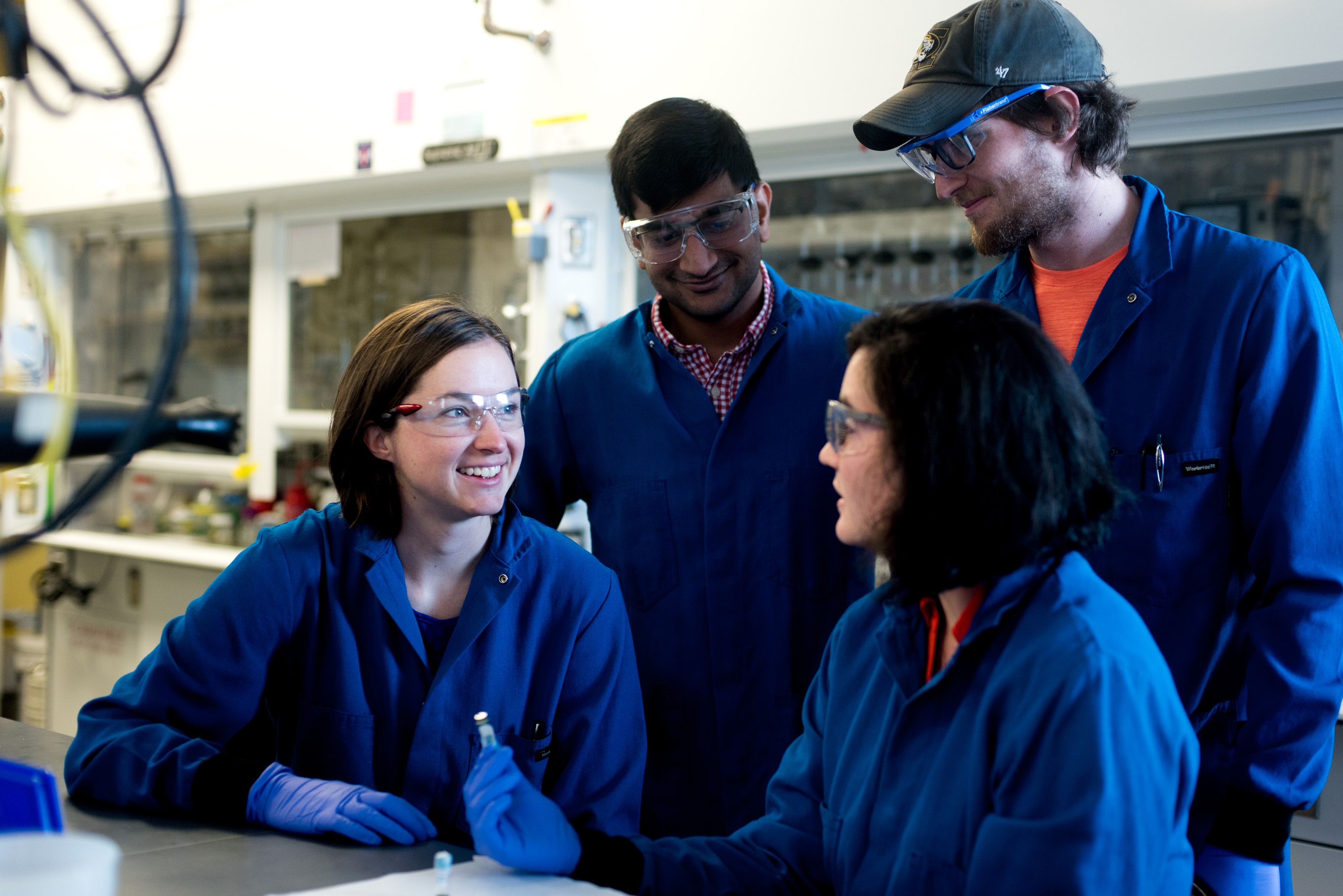
Rebecca Gamache / University of Texas at Austin
The traditional paradigm for materials research focuses on behavior in or near equilibrium. Through two Interdisciplinary Research Groups (IRGs), the Center for Dynamics and Control of Materials extends this paradigm to understand and control how materials behave over times ranging from femtoseconds to weeks, and over dimensions extending from macroscopic to atomic scales.

IRG 1, Fuel-Driven Pluripotent Materials will design and realize pluripotent materials – materials whose morphology and functionality can be actively controlled via suitable environmental inputs – based on both nanocrystal and biopolymer networks. Inspired by stem cells that can differentiate to take on distinct structures and functions, IRG 1 will design and synthesize materials whose polymorphic structures are accessed by kinetically controlled fueling processes proceeding along designed, out-of-equilibrium pathways. Chemical or optical fueling will push an assembly energetically uphill to non-equilibrium states, which spontaneously relax to their initial structures or generate new assemblies as the fuel is depleted. Adapting fueled mechanisms to synthetic materials will expand the range of adaptive functionalities, including optical, rheological, and contractile properties, that are not found in nature. These endeavors will facilitate technologies for energy efficiency, advanced manufacturing, and biotechnology. For example, mid-infrared thermal barriers require multiple optical states and response times to achieve camouflaging. In addition, soft, flexible materials with different configurations accessed via energy inputs offer outstanding potential for actuated motion in soft robotics. A team spanning five academic departments with expertise in organic chemistry, polymer and biomolecular materials, materials simulation, nanomaterials synthesis, and ultrafast optical characterization of materials will collaborate to create new classes of actively controllable soft nanomaterials. Learn more
IRG 2, Engineered Functionality in Atomically Thin Heterostructures addresses new material properties and functionalities enabled by engineered symmetries and patterns created through heterogeneous integration of atomically thin and molecular materials. Such structures offer exciting possibilities for exploring topology, correlations, and light-matter coupling in materials, with potential applications in electronics, photonics, and both classical and quantum information processing. We aim to address a set of key questions at the intersection of strong electron-electron interactions and non-trivial topology in different classes of moiré systems. Fundamental investigations of new quantum phases and targeted efforts to engineer new functionality in van der Waals heterostructures in the areas of (1) theory-led search for moiré systems with tunable correlations, (2) assembly and characterization of van der Waals heterostructures with tailored energy bands and correlations; and (3) electronic and photonic structures that harness the unique properties of moiré materials. Learn more

